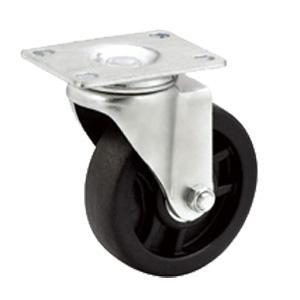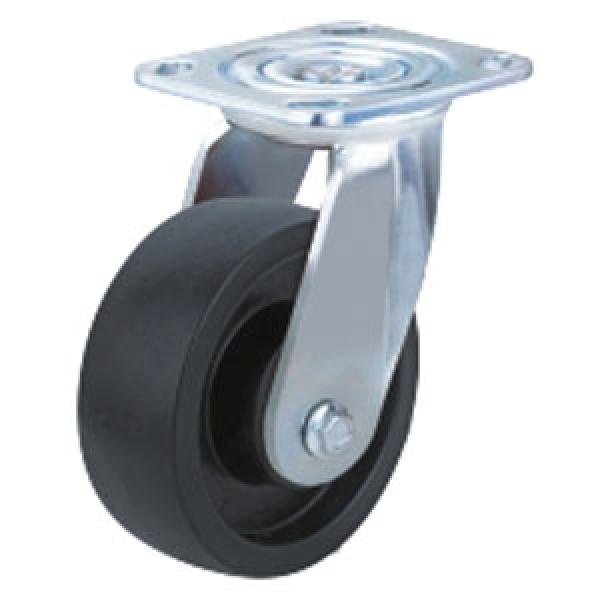Importance of Heat resistant casters and high temperature casters
In various industrial settings, the need for equipment that can withstand high temperatures is paramount. From bakery ovens to industrial kilns, there are numerous applications where standard casters would quickly deteriorate or fail due to exposure to extreme heat. This is where heat resistant casters, also known as high temperature casters, come into play. These specialized casters are designed to maintain their structural integrity and mobility in environments with elevated temperatures, offering durability and safety in the face of extreme heat.
Understanding Heat Resistant Casters and Their Applications
Heat resistant casters are specifically engineered to withstand temperatures well above those that standard casters can endure. These casters are commonly used in industrial ovens, autoclaves, food processing facilities, and other high-temperature environments where regular casters would not be able to function effectively. The ability of heat resistant casters to maintain their performance and maneuverability in such demanding conditions makes them indispensable for a wide range of industries.Key Features of Heat Resistant Casters
1.Material Selection: Heat resistant casters are typically constructed from materials that can withstand elevated temperatures without compromising their structural integrity. Common materials used for heat resistant casters include stainless steel, high-temperature nylon, and phenolic resin. These materials exhibit excellent heat resistance properties, ensuring that the casters remain functional and safe in extreme heat environments.
2.Temperature Rating: High temperature casters are designed to operate within specific temperature ranges, often far exceeding the capabilities of standard casters. It is crucial to select casters with temperature ratings that align with the requirements of the intended application. Understanding the maximum temperature exposure the casters will face is essential for choosing the right heat resistant casters for the job.
3.Load Capacity: Just like standard casters, heat resistant casters come with varying load capacities. When selecting heat resistant casters, it is important to consider the weight and load capacity requirements of the application. Ensuring that the chosen casters can support the expected loads under high-temperature conditions is critical for both safety and performance.
4.Wheel Type: The wheels of heat resistant casters are designed to withstand extreme heat and maintain their functionality. Different wheel materials and designs are available to suit specific applications, such as high-temperature resistant materials and specialized treads for enhanced traction in extreme heat environments.
Applications of High Temperature Casters
The applications of high temperature casters span across a wide range of industries and environments. Some common applications include:
1.Industrial Ovens and Furnaces: Heat resistant casters are essential components of industrial ovens and furnaces used in baking, food processing, metalworking, and other manufacturing processes. These casters enable the easy movement of heavy oven racks and ensure smooth operation within the high-temperature environment.
2.Autoclaves and Sterilization Equipment: In medical and pharmaceutical facilities, autoclaves and sterilization equipment rely on heat resistant casters to maintain mobility and functionality during sterilization processes that involve high temperatures and pressure.
3.Foundries and Metal Fabrication: Heat resistant casters are utilized in foundries and metal fabrication facilities where high temperatures are present during metal casting, forging, and related processes. These casters facilitate the movement of heavy equipment and materials in these demanding environments.
4. Commercial Kitchens and Bakeries: Heat resistant casters play a vital role in commercial kitchens and bakeries, where equipment such as industrial ovens, proofing cabinets, and baking racks require mobility and stability in high-temperature settings.Selecting the Right Heat Resistant Casters
When selecting heat resistant casters for a specific application, several factors should be carefully
considered:
1.Temperature Range: Identify the maximum temperature exposure that the casters will encounter and choose casters with a temperature rating that comfortably exceeds this threshold.
2.Load Capacity: Determine the weight and load requirements of the application to select heat resistant casters with appropriate load capacities that can safely support the intended loads.
3.Material Compatibility: Consider the compatibility of the caster materials with the specific environmental conditions, including exposure to heat, moisture, chemicals, and other factors that may impact performance.
4.Wheel Design: Choose wheel designs and materials that are suitable for the flooring surface and operational requirements of the application, ensuring optimal mobility and stability in high-temperature environments.
5.Industry Standards: Ensure that the selected heat resistant casters comply with relevant industry standards and certifications for heat resistance, safety, and durability.
In conclusion, heat resistant casters, also known as high temperature casters, are essential components in environments where extreme heat is a constant factor. Their ability to withstand high temperatures while maintaining mobility and stability ensures the safe and efficient operation of equipment in a wide range of industries. By understanding the key features and applications of heat resistant casters, as well as the factors to consider when selecting them, businesses can make informed decisions to ensure durability and safety in high-temperature environments.



 English
English Spanish
Spanish German
German Russian
Russian Arabic
Arabic Portuguese
Portuguese Italian
Italian French
French Hebrew
Hebrew Turkish
Turkish